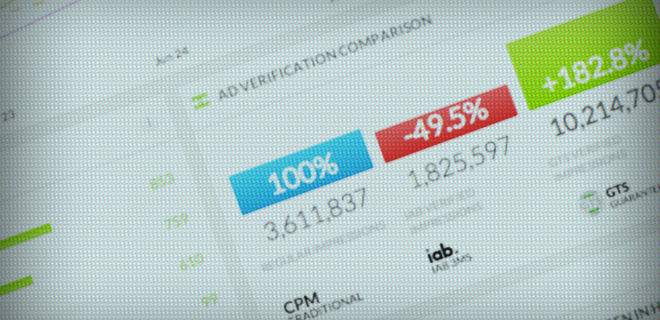
Riddle me this – what if desktop display ads were more like TV commercials?
You hit up your favorite website and a banner ad appears at the top of the screen. As you spend 20 seconds perusing headlines or reading some quick summaries, a new banner appears. Some of you may be thinking, “Publisher ad refreshing is such a shifty practice!” But said banner was “in-view” for 20 seconds, a measurement that is verified by a third-party provider.
Why 20 seconds? Because according to research by WebSpectator, 20 seconds appears to be the sweet spot for message retention. CEO André T. Parreira notes that the concept bears more than a casual resemblance to TV advertising, just like the name of the viewability technology that powers it: Guaranteed Time Slot, or GTS.
A recent recipient of accreditation by the Media Rating Council, GTS may be widely viewed as just another metric in the ever-growing viewability canon, but Parreira sees it going much further – opening up time as a new dimension in advertising metrics. WebSpectator’s varied services built around GTS betray the seemingly limited scope of viewability, and offer a fine vantage into the publisher potential in this area.
As Google and others are set to bring their proprietary metrics to the fray, publishers grudgingly accept the inevitability of viewability. Some publishers have been proactive, using site redesigns to create placements that are always in view or building ad units that accomplish the same feat. However, as we’ve learned at more than one AdMonsters Publisher Forum, ad units that seem to be “always in-view” don’t always register that way.
The first goal of the Making Measurement Make Sense (3MS) initiative – switch from an impressions served standard to an impressions viewed one – hasn’t become a reality because the measurement technologies and methodologies underlying the various offerings are extremely different and regularly produce wildly divergent results. Some tools only measure viewability on a percentage of impressions, forcing publishers to over-deliver to make good on guarantees. Nested iFrames have also presented assessment challenges.
This is part of the reason why publishers have viewed MRC viewability certification with skepticism – while the Council’s seal suggests the tech in question does what it advertises, there’s been a great deal of consternation over methodologies and tech-in-practice, making viewability feel like a raw deal for pubs.
The MRC has claimed it will lift its advisory against transacting on viewable impressions at the end of first quarter 2014, but it’s already been pushed back a few times now. Of course, that hasn’t stopped agencies and publishers from currently transacting using viewable impressions. Standard or none, advisory or none, premium publishers still need skin in the game – 2014 is viewability’s time.
Which makes WebSpectator’s MRC certification interesting – according to Parreira, the company needed only one technical committee meeting before getting a thumbs up, a rare if not unheard-of occurrence. Before viewability is a currency, WebSpectator considers time engaged a metric. After adding a few beacons to pub templates, WebSpectator uses more than 100 sensors to track user activity on a site – not just time an ad unit was in-view, but cursor movements, dwell time, and even selected text. An on-site demo highlights its extensive real-time measurements.
The in-view “stopwatch,” as Parreira puts it, hits pause when a user switches to another browser tab or is simply inactive – imagine if your TV could tell when you went to the kitchen during the commercial break. In addition, Parraira claims nested iFrames are not an issue since its code is on top of the property and tracks multimedia elements.
Rather than simply providing viewability metrics, WebSpectator works as a yield optimizer, fueling pub efforts to build new products and impression models based on time engaged. In addition, the company also offers real-time ad buying and selling capabilities. All these tools were employed in WebSpectator’s greatest success story: Brazilian ISP hub iG, which saw CPMs jump from a dollar or so into the $20s.
Pubs have likely been less scared of the concept of viewability than the technologies employed in measuring it. It’s been hard to think of viewability as anything more than another onus on publishers, especially when agency folk have admitted at our conferences that they won’t pay a premium for viewability – all the ads should be viewable anyway, right? But technology like WebSpectator’s suggest something that viewability advocates have long claimed: it can be a highly advantageous yield tool.
This is something the AdMonsters crew plans to discuss in great detail at the Publisher Forum in New Orleans this February. It’s time for pubs to stop being scared of viewability and take the initiative – step one is finding the right technology partners to get the most out of it.